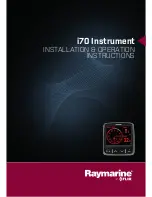
5
Audio Input Jack:
This is a stereo (Tip-Ring-Sleeve) jack that connects the MidiUp to the guitar using a
stereo cord. The tip of the jack (guitar audio) is connected internally to the tip of the output jack enabling
the signal to pass straight through the unit unhindered. The ring (which connects to the installed guitar pot
via the cable) is connected to the processing section of the MidiUp to convert the pot value to a MIDI Data
stream.
If a standard (mono) instrument cable is plugged into this jack and if the audio output jack is left connected,
the Tip of the cable is routed to the processing section instead. This is the standard configuration when
used with a volume pedal where the tip of the volume pedal jack is naturally connected to the pedal pot.
Audio Output Jack:
This is a mono (Tip-Sleeve) jack that is connected to the audio input jack to pass the
guitar signal unhindered. If left disconnected then it rewires the input jack for use only with a volume
pedal.
MIDI LED:
This LED blinks whenever the MidiUp is actually transmitting a MIDI data stream in
response to a the pot turning or the volume pedal moving. It also blinks whenever it sees a valid Program
Change Command coming from a connected MIDI foot controller. A valid PCC in this case is one that is
transmitted on the MidiUp’s own channel as set by the internal DIP switch.
HI/LO LED:
This LED will light whenever the guitar pot or volume pedal reach either their lowest or
highest extreme. When this LED lights it indicates that either a 0 (lowest) or a 127 (highest) MIDI value
have been transmitted and is your assurance that the MidiUp is seeing the full sweep range of the pot. If
upon turning the pot to it’s extremes the LED does not come on either on one side or both, then this
indicates that the MidiUp has not been calibrated to the pot and calibration should be performed. (See
Calibration section)
PWR LED:
When this LED is illuminated it simply means that DC power has been applied to the MidiUp
through the power jack on the back panel.
MIDI In Jack:
This jack may be connected to a MIDI foot controller normally used to select presets on
MIDI capable devices. Normally you will connect the MidiUp between the foot controller and your first
MIDI effect. The MidiUp will pass whatever signal the midi foot controller sends so all effects can
respond to it accordingly and it will also repsond to any Program Change command intended for itself. The
MidiUp can be directed to transmit Controller information over selected channels and with selected
Controller numbers in response to the foot controller.
MIDI Out Jack:
This Jack connects the MidiUp to the next effect device in line. It automatically
configures as a MIDI Thru jack unless the MidiUp is actually transmitting Controller data. If the MidiUp
receives data from the footswitch while it is currently transmitting, it will merge the data from the foot
controller insuring that no data is ever lost.
Power Jack:
This jack connects to the supplied power module.
ABOUT MIDI CONTROLLERS AND YOUR EFFECTS
Multi Effects devices and other MIDI equipment equipment are usually capable having their parameters
changed smoothly and in real time in response to MIDI Control Change (MIDI Controller) messages. If
your MIDI gear can respond to these types of messages then the MidiUp can be used with this equipment.
The MIDI Control Change message itself is a 3 byte message containing the MIDI channel (limited to
channels 1-8 in the MidiUp) that the message transmits over, the Controller number which can be anything
from 0-127 (limited to 0-15 in the MidiUp) and the last byte is the Controller value (from 0-127). The
Controller number represents the parameter in the MIDI effect that is to change, and the value represents
the degree of change of that parameter. The MIDI device must also be set to the same number as the MIDI
channel in the message. For example, if you have a MIDI device set to channel 1, and it’s echo time is






























